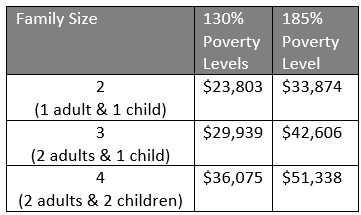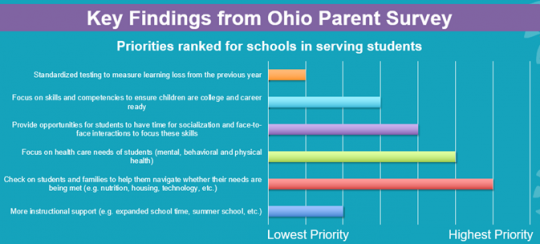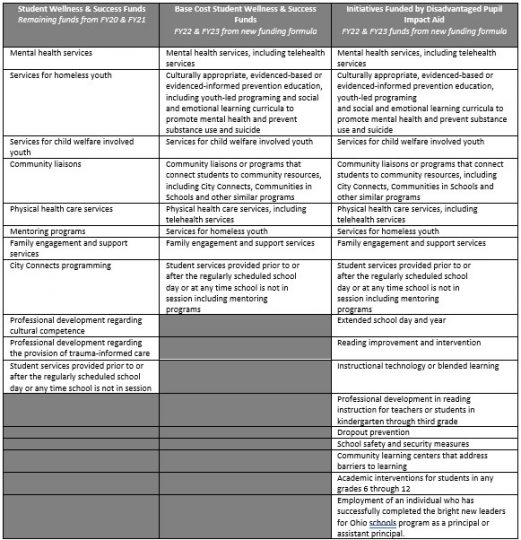 New Education Report Shows 25% of Funds for Low Income Students Targeted for Reading Improvement and Academic Support
New Education Report Shows 25% of Funds for Low Income Students Targeted for Reading Improvement and Academic Support
By Alison Paxson, Communications & Policy Associate
January 21, 2022
According to a new report from the Ohio Department of Education (ODE), the ways Ohio public school districts used economically disadvantaged funds during the last two years of COVID did not change much from the previous reporting period pre-pandemic.
In fact, nearly a quarter of all initiatives (23.44%) funded by the state to assist with costs of educating students from low-income households went towards reading improvement and intervention in 2020/2021, the most popular initiative reported in 2018 and 2019 as well.
“The overall assessment of the economically disadvantaged funds shows that initiatives have stayed consistent between the reporting periods,” states the Annual Report on Economically Disadvantaged Funds, a summary of local spending required by law to be sent to the Ohio General Assembly every odd year. “Schools around the state are using their funds in similar ways, through hiring of additional staff, purchasing reading and math programs and creating intervention programs.”
Figure 1 Annual Report on Economically Disadvantaged Funds, ODE, December 2021

Over the last two years, the state saw a slight increase in funding used toward “Instructional technology or blended learning” and “Academic interventions for students in any grades six through twelve”, while there was a decrease in spending on “Professional development in reading instruction for teachers of students in kindergarten through third grade” and “School safety and security measures”. These changes are not all that surprising, the report says, given remote learning, school closures, and the influx of new federal COVID relief funds to school districts.

To determine economic disadvantage and allocate funds accordingly to school districts, the state of Ohio uses the percentage of students eligible for free or reduced-price lunch. According to state law, economically disadvantaged funds could be used for any of the following or a combination of the following nine initiatives:
- Extended school day and year;
- Instructional technology or blended learning;
- Professional development in reading for teachers in grades K-3;
- Dropout prevention;
- School safety measures;
- Community learning centers;
- Academic intervention for students grades 6-12; and
- Employment of someone who completed the Bright New Leaders for Ohio Schools program
Last year, Children’s Defense Fund-Ohio partnered with the Ohio PTA to conduct a statewide parent survey on the educational and wellness needs of Ohio students, gathering parent perspectives on what their children needed to be healthy and ready to learn given the challenges of the pandemic. While this ODE report demonstrates that the use of economically disadvantaged funds towards academic interventions aligns well with parents’ instructional concerns, the survey findings showed that academic issues were not top of mind for parents and their concerns for their child’s overall wellbeing and success in school. This could suggest a possible misalignment between what parents believe children needed most and how economically disadvantaged funds were most prioritized during the pandemic. The survey results showed that Ohio parents ranked wraparound services (e.g., nutrition, housing, technology, etc.) and access to health care supports (mental, behavioral, and physical) highest by a fairly large margin in terms of what their children needed to thrive and be ready to learn. (While this survey had a 95% confidence interval, it does bear noting that members of the Ohio PTA are likely not identical demographically to families who benefit most from economically disadvantaged funding.)

However, Ohio’s newly enacted state budget, H.B. 110, signed into law by Governor DeWine for the 2022-2023 biennium, is bringing several sweeping changes to school funding, including changes that will impact the funding mechanisms used and how much funding school districts receive based on economic disadvantage over the next two years, likely meaning that such reports in the future from ODE may look quite different.
As part of the adoption of the partially phased-in Fair School Funding Plan, economically disadvantaged funds will now be referred to as Disadvantaged Pupil Impact Aid (DPIA). This aid is distributed based on the number of students who qualify as economically disadvantaged and given to districts through the larger school foundation funding process. While an economic disadvantage cost study is still urgently needed to determine the true cost of educating students living in poverty (estimated to be at least 30% higher according to national research), the new budget signed into law critically increases the amount of economic disadvantage aid per pupil – from $272 to $422.
The new funding formula’s DPIA is the resulting merger of the economically disadvantaged funds’ purposes (ORC 3317.25) with that of Student Wellness and Success Funds’ (ORC 3317.26).
Student Wellness and Success Funds were first dedicated to school districts in 2020, not as part of base cost of a school funding formula as they will be now, but as a separate line item dedicated to school districts. These funds were a key priority of the DeWine administration during the previous 2020-2021 biennial budget process and represented a landmark investment in student wraparound services at $675 million (which has since increased to $1.1 billion in the most recent state budget for 2022-2023 given heightened need for such services). Aligned with Ohio’s Strategic Plan for Education, Each Child, Our Future, over the last two years, these funds have helped school districts provide wraparound services to their students in 11 allowable categories, including: mental health services, physical health services, services for youth at risk of houselessness or involved in child welfare, and more. Some Ohio school districts even still have funds remaining from the FY20 and FY21 distributions of these dollars that have not yet been used, rolling over to this year since there was no deadline to spend them.
The new Base Cost Student Wellness and Success Funds will be distributed as part of the larger foundation funding process like the rest of economically disadvantaged funds as part of the newly created DPIA. However, the new funding formula does restrict the Base Cost Student Wellness and Success Funds to be used only for the 11 allowable uses that these funds were originally allocated toward in 2020 and 2021.
What this means is that there are ultimately three different funding streams school districts can use over the next biennium:
- Student Wellness and Success Funds that schools received during the 2019-2020 and 2020-2021 school years;
- Base Cost Student Wellness and Success Funds restricted to being used for the specific initiatives originally outlined for these funds; and
- Disadvantaged Pupil Impact Aid which is the former economically disadvantaged aid and continues to have those restrictions in uses.
The chart below provides broad overview of the different funding options available to school districts over the next biennium to continue to serve vital needs of their students, especially students experiencing poverty and in need of wraparound supports. For more information, guidance, and resources regarding these changes, please visit ODE’s website.


